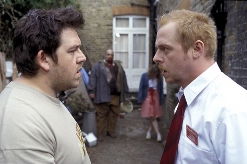
Are the zombies stalking your field? Ted Nield urges you to report the “authorities” to the authorities.
Geoscientist 19.3 March 2009
Some scientific theories may be dead, but they won’t lie down. Peer review becomes corrupt; those in charge of journals and funding agencies have a vested interest in propping up the hypotheses that they helped erect and which made their names, and so long after the rot has more than set in, these ideas lumber on, the walking un-dead. Their persistent reanimation oppresses the living to the point where there is nothing left for them to do but write outside the peer-reviewed literature completely.
Geoscientist, and
Geoscientist Online have helped our Fellows explore two “ruling theories” that, many commentators maintain, have become zombified. In 2003 we published a critique of plume theory by Gillian Foulger, which led to an illuminating online debate that was even reported in The Times. A surprisingly large number of distinguished Earth scientists turned out to have their doubts about plumes; but you would hardly guess this from the white literature. Two of the most vocal anti-plumatics, Don L Anderson (CalTech) and Warren B Hamilton (Colorado School of Mines), have now written an incisive and hilarious essay
1 that clearly shows this debate continues.
As Anderson and Hamilton point out, zombie theories are hardly “uncreative”. “They need to evolve and morph to keep up with the facts that threaten to bury them; they spawn rationalizations, exceptions, paradoxes… often in creative ways that diverge from real science.” But for all that they remain sterile – they no longer produce useful results. Wherever there is a funding frenzy, zombie concepts gather; for there you find the ultimate reason for their perpetuation. Zombies travel in bandwagons.
The Ptolemaic system, phlogiston, aether, Aristotelian mechanics … the list of zombies is almost endless, for they even if they are eradicated in the heartland, zombie ideas migrate to the hinterland of textbook science. They become conventional wisdom, “dogma, impervious to disproof.
Our second online debate (2004) concerned the question of whether the Chicxulub Crater truly was the smoking gun of the end-Cretaceous impact. Professor Gerta Keller of Princeton thought it was 300,000 years too old - something she has since been able to prove to her and many others’ satisfaction by careful stratigraphic work in contemporary sediments along the Brazos River in Texas
2. But when will this doubt enter into statements from Chicxulub devotees or belief among the public? No time soon, is my feeling. Nor, as Anderson and Hamilton’s essay reveals, is the fight over between the pro and anti plumers.
Those who enjoyed the debate between Keller and Jan Smit (many have used it in university courses as an example of scientific controversy) have been denied access as it waited to be transferred to the Society’s new website. I am happy to announce that the wait is over. Just click on the “Our Views” section to
read it in all its vituperative glory.
And if you know of any zombie science stalking your field and would like to write about it in Geoscientist, write to me at
[email protected].
References:
- Anderson, D L & Hamilton, W H, 2009: Zombie Science & Geoscience.
- Nield, T. 2007: Chicxulub commentary - impact factor.